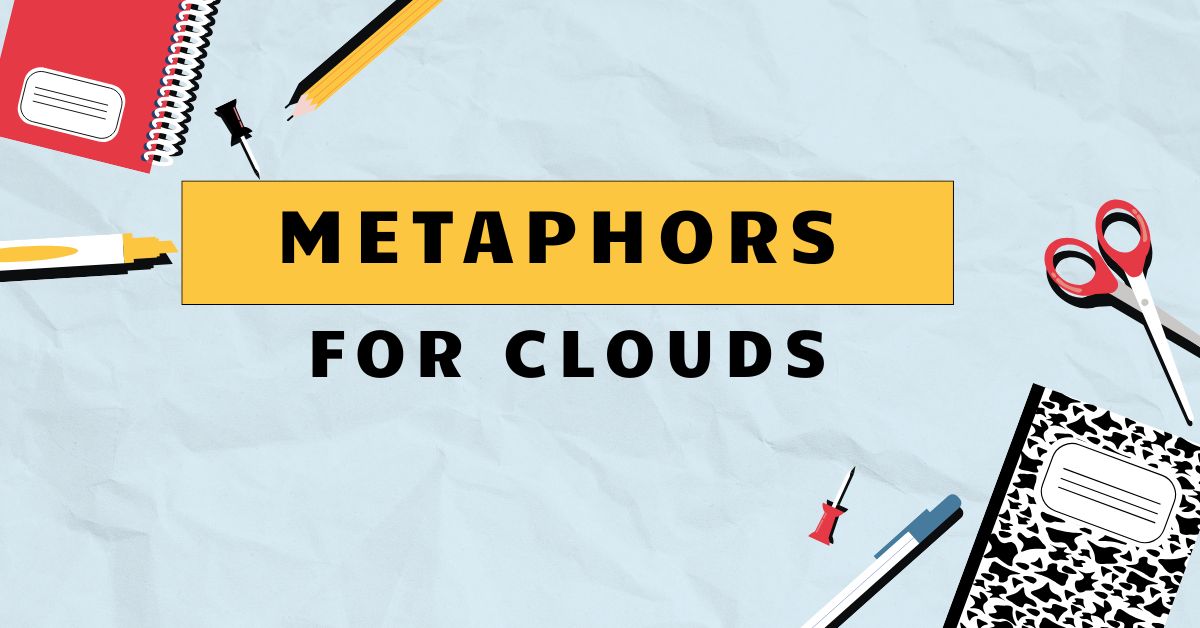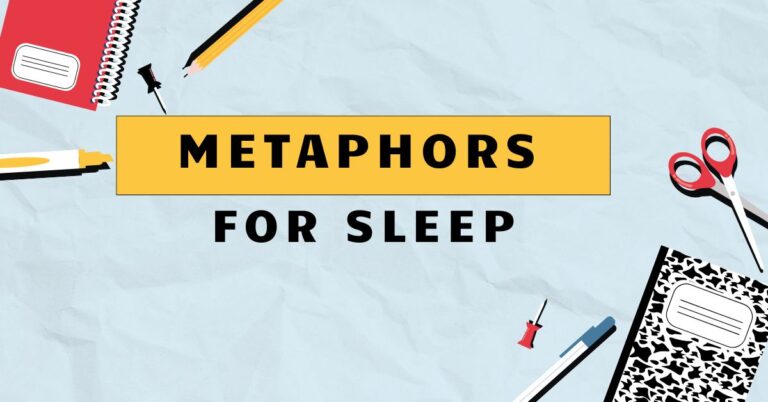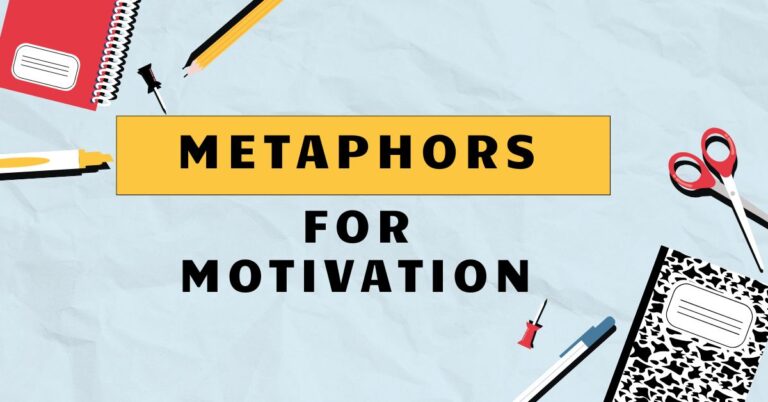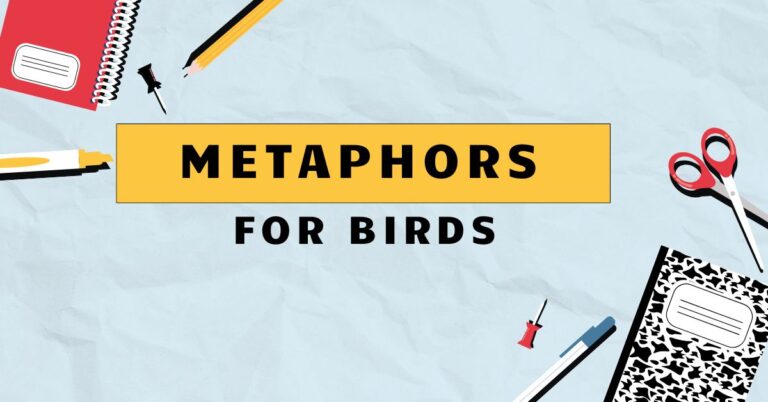49 Metaphors for Clouds: Enhancing Your English Vocabulary
Understanding and using metaphors effectively is crucial for enhancing your English vocabulary and comprehension. Metaphors allow us to describe abstract or complex ideas by relating them to more concrete, familiar concepts.
When it comes to describing the sky and its ever-changing clouds, metaphors offer a powerful way to add depth and nuance to our language. This article provides a comprehensive guide to metaphors for clouds, offering definitions, examples, and practical exercises to improve your understanding and usage.
This guide is beneficial for English language learners, writers, and anyone interested in enriching their descriptive abilities.
Table of Contents
- Introduction
- Definition of Metaphor
- Structural Breakdown of Cloud Metaphors
- Types and Categories of Cloud Metaphors
- Examples of Cloud Metaphors
- Usage Rules for Cloud Metaphors
- Common Mistakes with Cloud Metaphors
- Practice Exercises
- Advanced Topics in Cloud Metaphors
- Frequently Asked Questions
- Conclusion
Definition of Metaphor
Ametaphoris a figure of speech that directly compares two unlike things without using “like” or “as.” It asserts that one thingisanother, to suggest a likeness or analogy between them. Metaphors are used to create vivid imagery, convey complex ideas in a simpler way, and add emotional depth to language.
They are fundamental to both poetry and prose, and are essential for expressive and creative writing.
In the context of describing clouds, metaphors allow us to go beyond literal descriptions, painting a more evocative and imaginative picture. Instead of simply stating that a cloud is large, we might say it’s “a mountain range in the sky,” creating a stronger visual impact.
Structural Breakdown of Cloud Metaphors
The structure of a cloud metaphor typically involves two key elements: thetenorand thevehicle. The tenor is the subject being described (in this case, the cloud), and the vehicle is the object or concept to which the cloud is being compared.
The connection between the tenor and vehicle is the shared characteristic or quality that the metaphor highlights.
For example, in the metaphor “The clouds are cotton balls,” the tenor is “clouds” and the vehicle is “cotton balls.” The shared characteristic is their fluffy, white appearance. Understanding this structure helps in both creating and interpreting metaphors effectively.
A well-constructed cloud metaphor also considers thecontext. The effectiveness of a metaphor depends on how well it resonates with the reader’s experiences and associations.
A metaphor that works well in one context may not be as effective in another.
Types and Categories of Cloud Metaphors
Cloud metaphors can be categorized based on the specific characteristic or quality they emphasize. Here are some common categories:
Shape-Based Metaphors
Shape-based metaphors compare the form or outline of clouds to familiar objects. These metaphors focus on the visual resemblance between clouds and other shapes.
Texture-Based Metaphors
Texture-based metaphors emphasize the surface quality or feel of clouds, comparing them to materials with similar textures.
Color-Based Metaphors
Color-based metaphors focus on the hues and shades of clouds, drawing comparisons to objects or substances with similar colors.
Movement-Based Metaphors
Movement-based metaphors describe how clouds move or change, relating their motion to actions or entities known for similar movements.
Emotional-Based Metaphors
Emotional-based metaphors use clouds to evoke specific feelings or moods, connecting their appearance or behavior to human emotions.
Size-Based Metaphors
Size-based metaphors use clouds to illustrate scale and grandeur, often comparing them to enormous objects or landscapes to emphasize their impressive size and presence in the sky.
Weight-Based Metaphors
Weight-based metaphors focus on the perceived heaviness or lightness of clouds, using comparisons to objects of varying densities to convey their impact on the atmosphere and overall feeling.
Examples of Cloud Metaphors
Here are several examples of cloud metaphors, categorized by type, to illustrate their variety and effectiveness.
Table 1: Shape-Based Cloud Metaphors
| Metaphor | Explanation |
|---|---|
| The clouds were giant pillows. | Compares the clouds to large, soft cushions due to their puffy shape. |
| Clouds like brushstrokes across the sky. | Implies an artistic quality, suggesting someone painted the sky with clouds. |
| The clouds resembled fluffy sheep grazing in the sky. | Highlights the clouds’ woolly appearance and scattered distribution. |
| The towering clouds were castles in the heavens. | Emphasizes the height and imposing structure of the clouds. |
| Clouds formed intricate lace patterns above us. | Highlights the delicate and complex shapes of the clouds. |
| The cloud was a dragon, breathing fire in the sunset. | Imagines the cloud as a mythical creature, adding drama and intensity. |
| Clouds like cotton candy floated lazily by. | Suggests a light, sweet, and airy quality. |
| The clouds were sculpted mountains, capped with snow. | Highlights the resemblance to mountain peaks and snow-covered tops. |
| Clouds shaped like sailing ships traversed the horizon. | Adds a sense of adventure and journey. |
| The cloud was a gigantic anvil, poised to strike. | Conveys a sense of impending force or power. |
| Clouds resembling spilled milk spread across the sky. | Highlights the irregular shape and white color of the clouds. |
| The cloud was a giant’s footprint, left in the sky. | Adds a sense of scale and mystery. |
| Clouds like crumpled paper drifted overhead. | Highlights the irregular and textured appearance. |
| The cloud was a phoenix, rising from the ashes of the day. | Evokes a sense of rebirth and transformation. |
| Clouds shaped like faces stared down at the world. | Adds a sense of personification and observation. |
| The clouds were like ink blots, spreading across the sky. | Compares the clouds to amorphous shapes, highlighting their spreading nature. |
| Clouds like jigsaw pieces, scattered and unaligned. | Highlights the fragmented and disjointed appearance of the clouds. |
| The cloud was a painter’s palette, splattered with color. | Emphasizes the colorful and varied hues of the cloud. |
| Clouds shaped like ribbons danced in the wind. | Adds a sense of grace and movement. |
| The cloud was a grand amphitheater, open to the heavens. | Conveys a sense of vastness and openness. |
| Clouds resembling torn sails billowed in the breeze. | Highlights the tattered and wind-blown appearance of the clouds. |
| The cloud was a cosmic brain, contemplating the universe. | Adds a sense of intelligence and depth. |
| Clouds like winding rivers flowed across the sky. | Suggests a continuous and meandering movement. |
| The cloud was a shattered mirror, reflecting fragments of light. | Emphasizes the broken and reflective quality of the cloud. |
| Clouds shaped like keys unlocked the secrets of the sunset. | Adds a sense of mystery and revelation. |
This table presents a range of shape-based metaphors, each offering a unique way to visualize and describe the clouds’ forms.
Table 2: Texture-Based Cloud Metaphors
| Metaphor | Explanation |
|---|---|
| The clouds were velvet curtains, draping the sky. | Compares the clouds to smooth, soft fabric, emphasizing their texture. |
| Clouds like sandpaper rasped against the blue. | Suggests a rough or abrasive quality. |
| The clouds were fluffy blankets, covering the sun. | Highlights the soft and comforting texture. |
| Clouds resembling spun sugar floated effortlessly. | Emphasizes the light and delicate texture. |
| The clouds were like crumpled silk, shimmering in the light. | Suggests a luxurious and textured appearance. |
| Clouds like rough wool scratched at the sky’s surface. | Highlights a coarser, more tactile quality. |
| The clouds were feather pillows, soft and inviting. | Emphasizes the gentle and yielding texture. |
| Clouds resembling granite slabs hung heavily overhead. | Highlights a dense and weighty texture. |
| The clouds were like frosted glass, blurring the sun’s rays. | Suggests a semi-transparent and textured appearance. |
| Clouds like cotton wool absorbed the sound. | Emphasizes a soft and absorbent texture. |
| The clouds were like piles of ash, dark and gritty. | Suggests a rough, unpleasant texture. |
| Clouds resembling goose down floated gently. | Highlights an extremely soft and lightweight texture. |
| The clouds were like textured paper, catching the light. | Suggests a slightly rough and reflective texture. |
| Clouds like soft moss covered the horizon. | Emphasizes a plush and velvety texture. |
| The clouds were like coarse burlap, rough and uneven. | Highlights a rough and unrefined texture. |
| Clouds resembling chenille fabric added depth to the sky. | Highlights a soft, fuzzy, and luxurious texture. |
| The clouds were like rough concrete, unyielding and solid. | Suggests a hard, inflexible texture. |
| Clouds like velour draped across the sunset. | Emphasizes a soft, plush, and velvety texture. |
| The clouds were like corduroy, ridged and textured. | Highlights a distinct, linear texture. |
| Clouds resembling crepe paper crumpled in the sky. | Suggests a thin, crinkled, and delicate texture. |
| The clouds were like crushed velvet, dark and opulent. | Emphasizes a rich, textured, and luxurious quality. |
| Clouds like terry cloth absorbed the last rays of sunlight. | Highlights a soft, absorbent, and looped texture. |
| The clouds were like tweed, rough and complex. | Suggests a textured, patterned, and durable quality. |
| Clouds resembling damask fabric added elegance to the scene. | Highlights a richly patterned and textured quality. |
| The clouds were like seersucker, puckered and light. | Emphasizes a uniquely textured and breathable quality. |
This table showcases how texture-based metaphors can add a tactile dimension to cloud descriptions.
Table 3: Color-Based Cloud Metaphors
| Metaphor | Explanation |
|---|---|
| The clouds were silver linings, promising hope. | Highlights the bright, reflective edges of the clouds. |
| Clouds like charcoal smudged the evening sky. | Emphasizes the dark, sooty color of the clouds. |
| The clouds were golden honey, dripping across the horizon. | Highlights the warm, yellow color of the clouds. |
| Clouds resembling bruised plums darkened the sky. | Emphasizes the dark, purplish color of the clouds. |
| The clouds were ruby jewels, scattered across the heavens. | Highlights the deep, red color of the clouds. |
| Clouds like emeralds glowed in the afternoon sun. | Emphasizes the vibrant, green color of the clouds. |
| The clouds were sapphire oceans, stretching endlessly. | Highlights the deep, blue color of the clouds. |
| Clouds resembling molten lava flowed across the sky. | Emphasizes the fiery, red-orange color of the clouds. |
| The clouds were alabaster statues, gleaming softly. | Highlights the pure white color of the clouds. |
| Clouds like ink stains spread across the canvas of the sky. | Emphasizes the dark, black color of the clouds. |
| The clouds were peach blossoms, delicate and vibrant. | Highlights the soft, pink color of the clouds. |
| Clouds resembling amethyst crystals shimmered in the light. | Emphasizes the purple, crystalline color of the clouds. |
| The clouds were platinum shields, reflecting the sun’s glare. | Highlights the bright, silvery-white color of the clouds. |
| Clouds like rust stains marred the otherwise blue sky. | Emphasizes the reddish-brown color of the clouds. |
| The clouds were tangerine slices, bright and juicy. | Highlights the vibrant, orange color of the clouds. |
| Clouds resembling jade stones hung serenely overhead. | Emphasizes the green color of the clouds. |
| The clouds were bronze sculptures, catching the last light. | Highlights the metallic, brownish color of the clouds. |
| Clouds like saffron threads painted the sunset. | Emphasizes the yellow-orange color of the clouds. |
| The clouds were coral reefs, teeming with color. | Highlights the pinkish-red color of the clouds. |
| Clouds resembling onyx gems shrouded the moon. | Emphasizes the black color of the clouds. |
| The clouds were lavender fields, stretching to the horizon. | Highlights the soft, purple color of the clouds. |
| Clouds like ochre washes colored the landscape. | Emphasizes the earthy, yellow-brown color of the clouds. |
| The clouds were turquoise pools, reflecting the sky. | Highlights the blue-green color of the clouds. |
| Clouds resembling sepia tones gave the scene an antique feel. | Emphasizes the brownish color of the clouds. |
| The clouds were fuchsia blooms, bright and bold. | Highlights the vibrant, pinkish-purple color of the clouds. |
This table illustrates how color-based metaphors can add visual richness to cloud descriptions.
Table 4: Movement-Based Cloud Metaphors
| Metaphor | Explanation |
|---|---|
| The clouds danced across the sky. | Compares the clouds’ movement to the graceful movements of a dancer. |
| Clouds like racing horses galloped across the horizon. | Suggests a fast and energetic movement. |
| The clouds crawled slowly across the sky. | Emphasizes a slow, deliberate movement. |
| Clouds resembling drifting ships sailed silently by. | Highlights a smooth, effortless movement. |
| The clouds scurried like mice across the heavens. | Suggests a quick, hurried movement. |
| Clouds like lazy rivers meandered through the sky. | Emphasizes a slow, winding movement. |
| The clouds surged forward like an advancing army. | Suggests a powerful, unstoppable movement. |
| Clouds resembling tumbling waterfalls cascaded down. | Highlights a rapid, downward movement. |
| The clouds floated like weightless spirits. | Emphasizes a gentle, ethereal movement. |
| Clouds like slithering snakes wound their way across the sky. | Suggests a sinuous, twisting movement. |
| The clouds marched steadily onward, unwavering and resolute. | Highlights a determined, consistent movement. |
| Clouds resembling spinning tops twirled in the wind. | Emphasizes a rotating, dynamic movement. |
| The clouds glided effortlessly, like skaters on ice. | Suggests a smooth, graceful movement. |
| Clouds like shooting stars streaked across the night sky. | Emphasizes a fast, linear movement. |
| The clouds drifted aimlessly, like lost souls. | Suggests a directionless, wandering movement. |
| Clouds resembling flocks of birds swooped and soared. | Highlights a dynamic, aerial movement. |
| The clouds tumbled wildly, like clothes in a dryer. | Suggests a chaotic, uncontrolled movement. |
| Clouds like winding roads stretched into the distance. | Emphasizes a long, meandering movement. |
| The clouds surged and retreated, like ocean waves. | Suggests a rhythmic, oscillating movement. |
| Clouds resembling dancing flames flickered and wavered. | Highlights a lively, irregular movement. |
| The clouds churned restlessly, like a stormy sea. | Suggests a turbulent, agitated movement. |
| Clouds like swaying trees bowed in the breeze. | Emphasizes a gentle, rhythmic movement. |
| The clouds scattered quickly, like frightened rabbits. | Suggests a rapid, dispersed movement. |
| Clouds resembling rising smoke spiraled upwards. | Highlights a vertical, ascending movement. |
| The clouds gathered ominously, like a gathering storm. | Suggests a deliberate, foreboding movement. |
This table demonstrates how movement-based metaphors can bring dynamism and life to cloud descriptions.
Table 5: Emotional-Based Cloud Metaphors
| Metaphor | Explanation |
|---|---|
| The clouds were tears of the sky. | Connects the clouds to sadness or sorrow. |
| Clouds like angry fists threatened the city. | Suggests a sense of menace or aggression. |
| The clouds were peaceful sighs, calming the world. | Emphasizes a sense of tranquility and relief. |
| Clouds resembling jealous shadows crept across the sun. | Highlights a sense of envy or possessiveness. |
| The clouds were joyful smiles, brightening the day. | Suggests a sense of happiness and optimism. |
| Clouds like worried brows furrowed above us. | Emphasizes a sense of anxiety or concern. |
| The clouds were hopeful whispers, promising a brighter future. | Suggests a sense of anticipation and encouragement. |
| Clouds resembling grieving shrouds covered the landscape. | Highlights a sense of mourning or loss. |
| The clouds were ecstatic shouts, celebrating the dawn. | Suggests a sense of elation and triumph. |
| Clouds like fearful eyes watched from above. | Emphasizes a sense of apprehension or vulnerability. |
| The clouds were lonely wanderers, searching for connection. | Suggests a sense of isolation and longing. |
| Clouds resembling triumphant banners waved in the wind. | Highlights a sense of victory and pride. |
| The clouds were melancholic poems, written across the sky. | Suggests a sense of pensiveness and reflection. |
| Clouds like suspicious spies lurked in the shadows. | Emphasizes a sense of distrust and secrecy. |
| The clouds were grateful blessings, watering the earth. | Suggests a sense of appreciation and generosity. |
| Clouds resembling resentful ghosts haunted the horizon. | Highlights a sense of bitterness and unresolved conflict. |
| The clouds were passionate flames, burning with desire. | Suggests a sense of intensity and fervor. |
| Clouds like innocent babes slept peacefully above. | Emphasizes a sense of purity and tranquility. |
| The clouds were resentful guardians, protecting their domain. | Suggests a sense of vigilance and territoriality. |
| Clouds resembling ecstatic dancers whirled in the sky. | Highlights a sense of joy and celebration. |
| The clouds were somber judges, surveying all below. | Suggests a sense of authority and impartiality. |
| Clouds like playful children chased each other above. | Emphasizes a sense of fun and spontaneity. |
| The clouds were forgiving mothers, sheltering the earth. | Suggests a sense of compassion and protection. |
| Clouds resembling stern fathers watched with disapproval. | Highlights a sense of strictness and judgment. |
| The clouds were curious onlookers, observing human affairs. | Suggests a sense of interest and detachment. |
This table illustrates the power of emotional-based metaphors to evoke feelings and moods through cloud descriptions.
Usage Rules for Cloud Metaphors
When using cloud metaphors, consider the following rules to ensure clarity and effectiveness:
- Relevance: Ensure the comparison is relevant and makes sense in the context. The shared characteristic between the cloud and the vehicle should be clear.
- Originality: Strive for originality to make your metaphors more impactful. Avoid clichés.
- Clarity: The metaphor should enhance understanding, not obscure it. If the comparison is too abstract or obscure, it may confuse the reader.
- Consistency: Maintain consistency in your metaphorical language. Avoid mixing metaphors in a way that creates confusion.
- Audience: Consider your audience when choosing metaphors. What resonates with one audience may not resonate with another.
Common Mistakes with Cloud Metaphors
Here are some common mistakes to avoid when using cloud metaphors:
Table 6: Common Mistakes with Cloud Metaphors
| Incorrect | Correct | Explanation |
|---|---|---|
| The clouds were like a car. | The clouds were like fluffy sheep. | The comparison to a ‘car’ is too broad and lacks a clear shared characteristic. |
| The clouds were angry pillows. | The clouds were angry fists. | Mixing emotions with an unrelated object. |
| The clouds flowed like solid rocks. | The clouds flowed like rivers. | Contradictory terms; rocks are not typically associated with flow. |
Practice Exercises
Test your understanding of cloud metaphors with these exercises.
Exercise 1: Identify the Type of Metaphor
Identify the type of cloud metaphor (shape, texture, color, movement, or emotional) used in each sentence.
Table 7: Practice Exercise 1
| Sentence | Type of Metaphor | Answer |
|---|---|---|
| The clouds were cotton balls in the sky. | Shape | |
| The clouds were velvet curtains, draping the sky. | Texture | |
| Clouds like charcoal smudged the evening sky. | Color | |
| The clouds danced across the sky. | Movement | |
| The clouds were tears of the sky. | Emotional | |
| The clouds were towering giants in the heavens. | Size | |
| The clouds were leaden weights, pressing down on the world. | Weight | |
| Clouds like crumpled paper drifted overhead. | Texture | |
| The clouds resembled spilled milk spread across the sky. | Shape | |
| The clouds surged forward like an advancing army. | Movement |
Exercise 2: Create Your Own Metaphors
Create your own cloud metaphors for each category:
Table 8: Practice Exercise 2
| Category | Your Metaphor |
|---|---|
| Shape | |
| Texture | |
| Color | |
| Movement | |
| Emotional |
Possible answers:
- Shape: The clouds were fluffy dragons in the sky.
- Texture: The clouds were like sandpaper scratching the sky.
- Color: The clouds were golden sunsets, painting the horizon.
- Movement: The clouds raced like wild horses in the sky.
- Emotional: The clouds were lonely sighs, drifting across the sky.
Advanced Topics in Cloud Metaphors
For advanced learners, consider exploring the use of extended metaphors, where a single metaphor is developed throughout a longer passage. This can create a richer and more complex imagery.
Another advanced topic is the use of mixed metaphors intentionally, for comedic or surreal effect. While often considered a mistake, mixed metaphors can be used deliberately to create a jarring or humorous image.
Exploring cultural variations in cloud metaphors can also be insightful. Different cultures may associate different meanings and emotions with clouds, leading to unique metaphorical expressions.
Frequently Asked Questions
- What is the difference between a metaphor and a simile?
A metaphor directly equates two unlike things, while a simile uses “like” or “as” to make a comparison. For example, “The clouds were cotton balls” (metaphor) vs. “The clouds were like cotton balls” (simile).
- How can I improve my ability to create effective metaphors?
Read widely, pay attention to the world around you, and practice making comparisons between different things. Experiment with different types of metaphors and get feedback on your writing.
- Are there any metaphors that should be avoided?
Avoid clichés and overused metaphors, as they can weaken your writing. Also, be mindful of cultural sensitivities and avoid metaphors that could be offensive or insensitive.
- Can metaphors be used in everyday conversation?
Yes, metaphors are common in everyday conversation. They can help you express ideas more vividly and engagingly. For example, saying “He’s a rock” to describe someone who is dependable.
- How do I know if a metaphor is too confusing?
If your readers struggle to understand the connection between the tenor and the vehicle, or if the metaphor creates a confusing or contradictory image, it may be too confusing. Get feedback from others to gauge their understanding.
- What is the role of context in understanding metaphors?
Context is crucial for understanding metaphors. The meaning of a metaphor can change depending on the surrounding text and the reader’s background knowledge. A metaphor that works well in one context may not work well in another.
- Can metaphors be subjective?
Yes, metaphors can be subjective. Different people may interpret a metaphor in different ways, based on their own experiences and associations. This subjectivity is part of what makes metaphors so rich and interesting.
- How can I use metaphors to enhance my writing style?
Metaphors can add depth, vividness, and emotional resonance to your writing. Use them to create strong images, convey complex ideas, and engage your readers’ imaginations. Experiment with different types of metaphors to find what works best for your style.
- Are there specific types of writing where metaphors are more appropriate?
Metaphors are particularly effective in creative writing, poetry, and persuasive writing. However, they can also be used in other types of writing, such as journalism and academic writing, to make complex ideas more accessible and engaging.
- How do you avoid mixed metaphors effectively?
To avoid mixed metaphors, focus on maintaining a consistent image or concept throughout your description. Carefully consider the associations and implications of each word you use, and ensure they align with the overall metaphor you’re trying to create. Rereading and editing your work can also help catch any unintentional inconsistencies.
Conclusion
Mastering the use of metaphors for clouds can significantly enhance your descriptive abilities and vocabulary. By understanding the different types of cloud metaphors and practicing their application, you can paint more vivid and engaging pictures with your words.
Remember to focus on relevance, originality, and clarity to create metaphors that resonate with your audience and enrich your writing.
Keep experimenting with different comparisons and exploring the nuances of language. With practice, you’ll be able to craft cloud metaphors that capture the beauty and complexity of the sky in a unique and compelling way.
Embrace the opportunity to express yourself creatively and elevate your writing through the art of metaphor.







